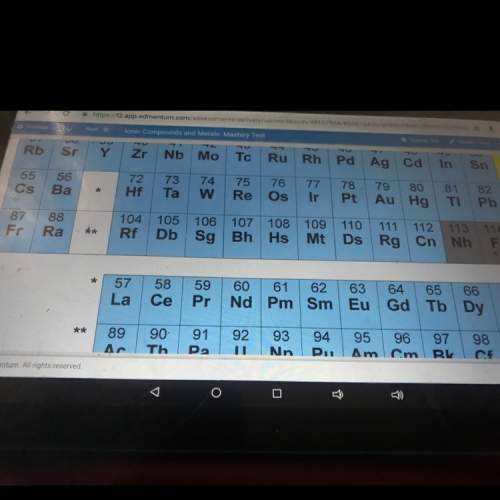
Chemistry, 11.02.2020 03:01, carter4026
Consider the equation:
CHCl3(g)+Cl2(g) > CCl4(g)+HCl(g)
The initial rate of the reaction is measured at several different concentrations of the reactants with the following results: [CHCl3](M) [Cl2](M) Initial rate (M/s)
0.010 0.010 0.0035
0.020 0.010 0.0069
0.020 0.020 0.0098
0.040 0.040 0.027
1. From the data, choose the correct rate law for the reaction.
Rate = k[CHCl3][Cl2]^2Rate = k[CHCl3]^2[Cl2]^1/2Rate = k[CHCl3][Cl2]Rate = k[CHCl3][Cl2]^1/2
2. the rate constant (k) for the reaction. Express your answer using three significant figures.

Answers: 1
Other questions on the subject: Chemistry

Chemistry, 21.06.2019 16:30, 1020lakyn
Subduction zones occur on earth where dense oceanic crust dives under more buoyant continental crust. these boundaries are characterized by a deep ocean trench next to a high continental mountain range, large numbers of earthquakes and volcanoes. all of this is further evidence for the a) big bang theory b) origin of the species eliminate c theory of plate tectonics d theory of natural selection 4 sedimentary rocks found high in the himalayen mountain
Answers: 1

Chemistry, 22.06.2019 03:30, tbeck225
If a solution is considered basic, then a) the hydroxide ion and hydronium ion concentrations are equal. b) the hydroxide ion concentration is less than the hydronium ion concentration. c) the hydronium ion concentration is greater than the hydroxide ion concentration. d) the hydroxide ion concentration is greater than the hydronium ion concentration.
Answers: 1

Do you know the correct answer?
Consider the equation:
CHCl3(g)+Cl2(g) > CCl4(g)+HCl(g)
The initial rate of the reac...
CHCl3(g)+Cl2(g) > CCl4(g)+HCl(g)
The initial rate of the reac...
Questions in other subjects:


English, 28.01.2021 18:40



History, 28.01.2021 18:40


History, 28.01.2021 18:40

Physics, 28.01.2021 18:40

Mathematics, 28.01.2021 18:40

Mathematics, 28.01.2021 18:40


![Rate=k[CHCl_3]^1[Cl_2]^\frac{1}{2}](/tpl/images/0505/9699/bea07.png)

![rate=k[CHCl_3]^x[Cl_2]^y](/tpl/images/0505/9699/ba01c.png)


![0.0035=k[0.010]^x[0.010]^y](/tpl/images/0505/9699/b387a.png) (1)
(1)
![0.0069=k[0.020]^x[0.010]^y](/tpl/images/0505/9699/ae150.png) (2)
(2)
![\frac{0.0069}{0.035}=\frac{k[0.020]^x[0.010]^y}{k[0.010]^x[0.010]^y}](/tpl/images/0505/9699/79be9.png)
 therefore x=1.
therefore x=1.![0.0098=k[0.020]^x[0.020]^y](/tpl/images/0505/9699/46f00.png) (4)
(4)
![\frac{0.0098}{0.0069}=\frac{k[0.020]^x[0.020]^y}{k[0.020]^x[0.010]^y}](/tpl/images/0505/9699/470b5.png)
 therefore
therefore 
![rate=k[CHCl_3]^1[Cl_2]^\frac{1}{2}](/tpl/images/0505/9699/cc117.png)
![0.0035=k[0.010]^1[0.010]^\frac{1}{2}](/tpl/images/0505/9699/a917e.png)






